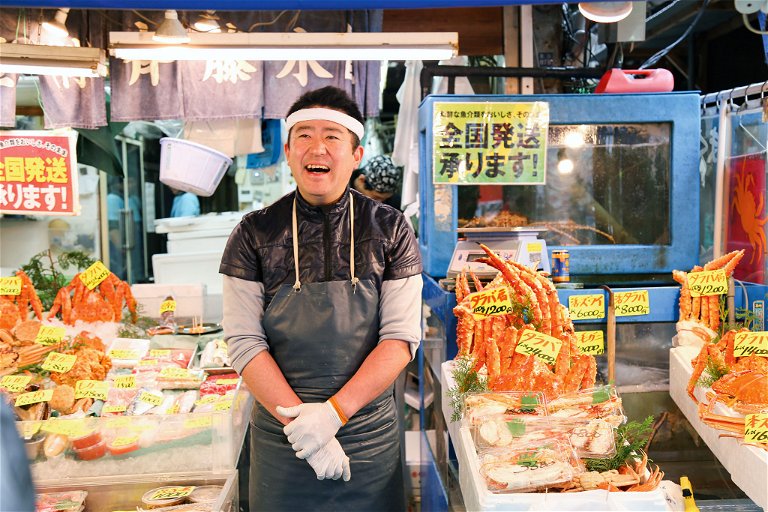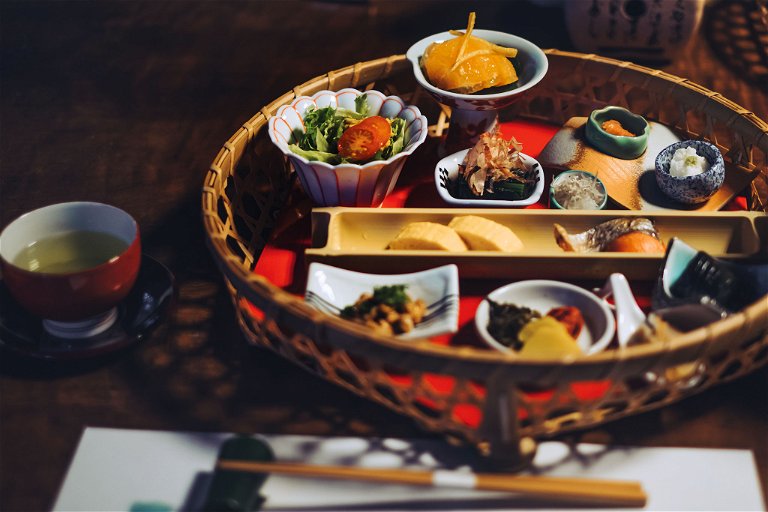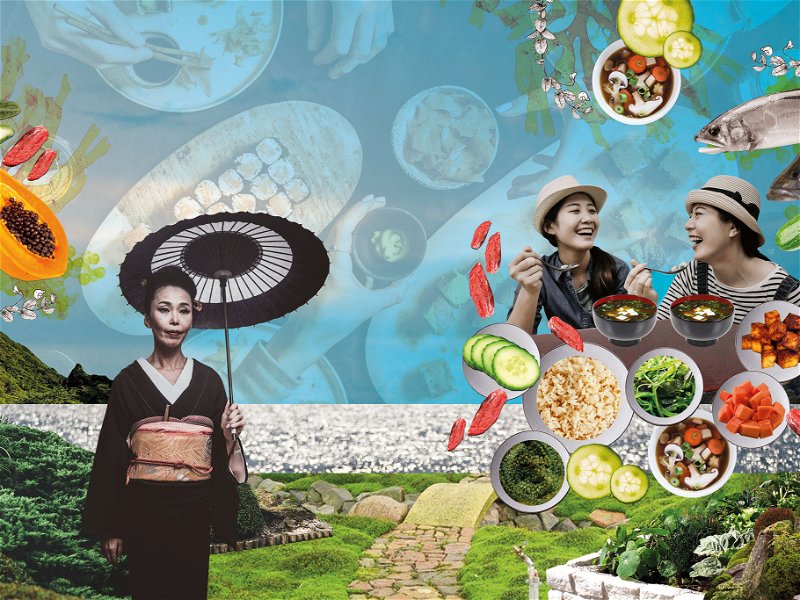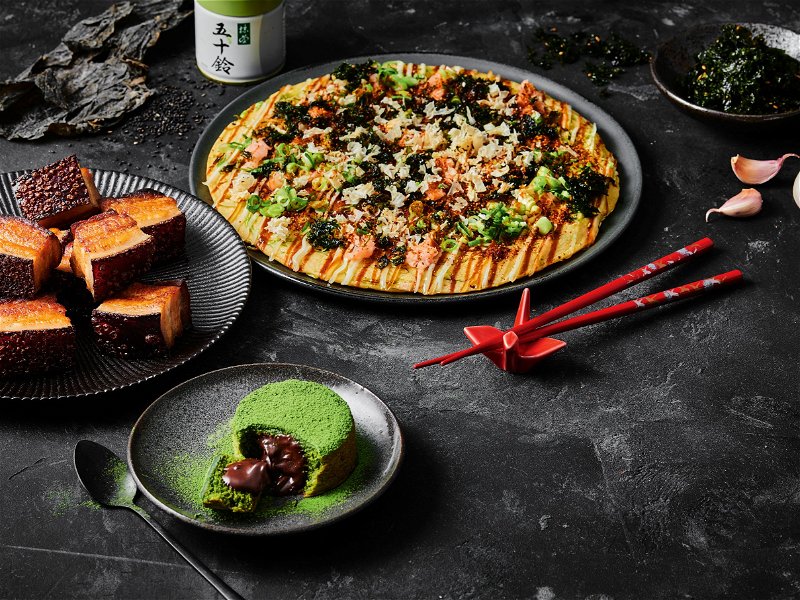Perfect indulgence: how "five elements" shape the success of Japanese cuisine
Japanese cuisine is a true form of art. In the West it has celebrated a veritable triumph in recent decades. Their flavours and aesthetics are based on the traditional "five elements theory", which makes them particularly healthy and digestible.
The first surviving reports on Japanese food culture were anything but flattering: "They have ginger, citrus fruits, Szechuan pepper and Mioga ginger, but don't know how to use them in cooking," it reads. "And since the climate is warm, they eat raw vegetables in both summer and winter. At mealtimes, they eat with their fingers." The records date back to 239 AD - and are admittedly not from the islands directly, but from the chronicles of the Wei dynasty in neighbouring China. They are still worth reading and full of insight today.
While historians and gourmets like to wax lyrical about how little has changed in the past centuries in terms of culinary high culture, if we were to say that Japanese cuisine has changed, no one would be tempted to make at least one claim today: that the Japanese do not know how to "use the rich treasure trove of ingredients that their islands offer in cooking" would probably not occur to anyone.
It was only a few years ago that UNESCO formally recognised Japanese cuisine by awarding "Washoku", traditional Japanese cuisine, the title of Intangible World Cultural Heritage. It has its origins around 2,000 years ago in Chinese influences, and was later influenced by the arrival of Korean monks and perfected in the Edo period of the 17th century.

At the time when UNESCO awarded its seal of approval, Japanese cuisine had already begun its triumphal march across the globe. Today, it is hard to imagine any European country without it, let alone the USA. This applies not only to their "pure" form, but their flavours, techniques and even their philosophy have increasingly become an integral part of Western country cuisines. When you think of fusion cuisine in Europe, you can't help but think of Japan in many cases.
As is so often the case when culinary traditions find their way abroad, the beginning was admittedly difficult. What was on offer did not do justice to the many facets of Japanese cuisine. It was greatly simplified, as European palates first had to be slowly introduced to the foreign dishes. Cold rice with raw fish and seaweed? When the first sushi bars opened, it was a challenge for many.

Japanese cuisine only became popular in Austria in the mid-1990s. Kojiro on Rechte Wienzeile is the oldest sushi bar in Vienna, preceded by Izakaya in Linz, which opened in 1985. "Akakiko" soon made sushi socially acceptable, especially among young people, and today it is the largest Japanese food chain in Austria with 18 branches. In Germany the first sushi restaurants were established a little earlier in the 1980s in Hamburg and Düsseldorf, in the slipstream of Japanese companies that set up shop there. In other countries too, it was Japanese exiles who began to popularise sushi after the Second World War, especially in the USA; the first sushi bar was opened there in 1966 by Noritoshi Kanai in Little Tokyo. He had the fish that was not available locally flown in.
Healthy and aesthetic
Today, sushi, sashimi and maki have long since lost their exotic touch. New gastronomic concepts that reflect Japanese cuisine more authentically are shaping the scene in cities, often with unexpected fusion ideas: "Itameshi" combines Japanese flavours with Italian cuisine, "Nikkei" cuisine combines Japanese with Peruvian cuisine. (Again, emigrants provided the inspiration - it was job-seeking Japanese who ended up in Peru).
Japan is also proving its pioneering role time and again in other ways: for a few years now, more and more cities have been opening cat cafés where people can enjoy coffee and cake in the company of their four-legged friends. (Ideally, they can even be stroked). Although the concept actually originated in Taiwan, Japan is considered the source of the idea. The first cat café opened there in 2004 in the city of Osaka, and the concept has been causing a sensation ever since.

The fact that Japanese cuisine is constantly gaining new fans in Europe is not only due to the desire for something new (and unusual), but also has serious reasons: Japanese cuisine, inspired by Buddhism and Shintoism, is considered to be a genuine form of art; highly aesthetic and at the same time particularly healthy.
It is no coincidence that life expectancy in Japan is high, with an above-average number of the world's oldest people over the age of 100 living here. Traditional cuisine - low in calories, sugar and meat and low in saturated fats, but rich in cereals and pulses as well as fish and seafood - plays an undeniable part in this.
The magic number five
If you want to understand the philosophy of Japanese cuisine, there is no getting around the number five: Washoku (translated: "harmony of food") is characterised by the five-element doctrine - with the aim of achieving balance between the individual components of a meal. Above all, Japanese chefs are guided by the five flavours, the balance of which is the primary goal of a menu. In addition to the tastes that are also well-known in Europe (salty, sour, sweet and bitter), they helped "umami" to achieve worldwide fame. The full-bodied taste can be perceived at the back of the tongue and is often described as "hearty" in this country. The salty, almost malty, strong miso paste and soy sauce are the epitome of umami flavor. Souring is done with (mild) vinegar. The rice wine mirin and dark coconut sugar are used for sweetness, not white table sugar.
Incidentally, there is no tradition of really sweet desserts, even if the ubiquitous mochi might suggest otherwise. But even the small balls of glutinous rice, which are pounded into a fine dough, are not always filled with a really sweet filling. Anko, a bean paste, is a classic.
Purity, appetite and tranquillity
Five colours also play a central role on the plate: white stands for purity and cleanliness, yellow and red stimulate the appetite, green has a calming effect. The fifth colour, black, is used as a contrasting background, for example in the form of the familiar black bento boxes. However, the balanced colour distribution is not just intended to please the eye. The selection of ingredients from different colour groups is intended to promote a balanced diet, as the colours give a rough indication of the nutrients they contain.
The five also appears in the preparation of the dishes: a menu prepared from five different dishes is a characteristic of washoku. In addition to a high proportion of raw ingredients (especially fish and seafood, but also salads and even raw liver), Japanese cuisine relies on grilled, deep-fried (only here is a lot of oil used), boiled and steamed dishes. The different textures contribute to the culinary experience, and the different methods also have different effects on digestion and the nutritional value of the food.
Speaking of textures: Japanese cuisine also focuses on the five senses. There is no doubt that taste is of essential importance. You also eat with your eyes. But the smell of food is also a decisive component in Japan. Just like the feel: first of all, the chopsticks - either made of untreated wood or lacquered - are touched, then the wooden soup bowl and the porcelain rice bowl. An overall experience. Missing hearing?! In fact, in Japan, slurping the soup is good manners, and you can also take a hearty bite of the fried food.

Five correct values
The right values are still necessary to make the meal perfect: the temperature (hot soup, for example, should be eaten really hot, cold drinks should actually be drunk cold) must be just as correct as the portion size and the preparation methods which, in the case of a sophisticated menu, are often even individually adapted by the chefs to each guest (e.g. to their age or gender). The right technique is also a decisive value: every chef should only handle the (main) ingredients to the extent that their characteristic taste is not distorted or displaced. Real sushi masters even swear that the angle at which the fish is cut influences its taste.
The last, perhaps most important value is "Koroko". The translation is not easy, words such as soul, spirit, affection or even love would be appropriate. This is where Far Eastern cuisine meets local cuisine: if you cook with love, you will succeed in everything.
Don't miss out!
Sign up now for our newsletter.









